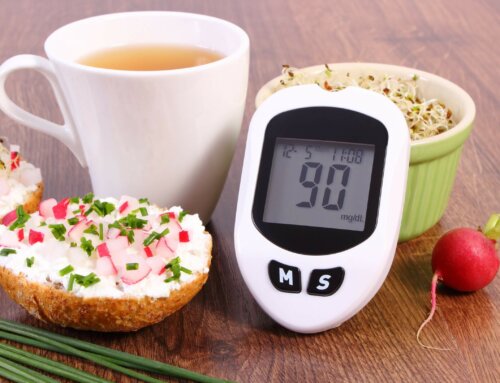Finding our way around the kitchen can be challenging whether you have diabetes or not. There are healthy choices, not so healthy choices and unhealthy choices. We all need to be cognizant of the amount of saturated or trans fat (those artery clogging, cholesterol producing fats), sodium (can be harmful to your heart, blood pressure and kidneys), and processed sugar we allow into our bodies. We all should consider eating well-balanced meals by mixing protein, high fiber carbohydrates, and unsaturated fats together when we’re able. Also, we want to feed our body – replenish our energy with food – every 3-4 hours. This keeps our metabolism working at a higher speed and gives our body the energy it needs to function more efficiently. Making food choices when you have diabetes is no different except being aware of how the amount of carbohydrates you choose impacts your blood glucose levels due to the type of diabetes you have and the medication you are taking.
Some helpful tools you may consider keeping in your kitchen to assist you on your road to improved health are scales to measure/weigh food, measuring cups and spoons and perhaps a plate that provides an understanding of portion control to compare what you typically eat to the recommended portion sizes. Things add up! One tablespoon of healthy olive oil (or any other oil for that matter) contains 120 calories. Try measuring the amount you use on your salad or in your dishes. Sometimes we consume many more calories than we think. The food can be healthy but too much of a good thing isn’t always good. One (1) cup of cooked rice or pasta (whether brown or white) has about 45 grams of carbohydrates (similar to 3 slices of bread). Foods with color and those with a darker color have more nutritional value so try to choose these more frequently.
The EatSmart Nutrition Scale is a helpful learning tool that provides nutritional information to assist you in making healthier choices. It calculates nutrients from the food labels and has a digital display for easy reading. There is a database of almost 1000 foods so it can certainly provide you with nutritional information for many of your food choices.
The Diabetes Portion Plate (available for adults and children) is another teaching tool that will assist you in consuming the proper portion size in a well-balanced meal. Try comparing the portions recommended in the portion plate to what you normally have. We have become accustomed to the “super-size” when dining out, at fast food places, etc. and we have adopted those eating patterns at home as well. The diabetes portion plate will re-teach you proper techniques for better health.
We need to eat to survive. Too much food zaps our energy and may add excessive weight which contributes to obesity-related diseases. Use food for enjoyment but also as your fuel source. Be smart and think before you eat.
NOTE: Consult your doctor first to make sure my recommendations fit your special health needs.












Leave A Comment